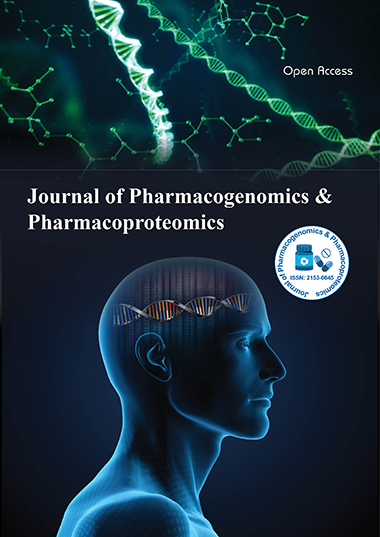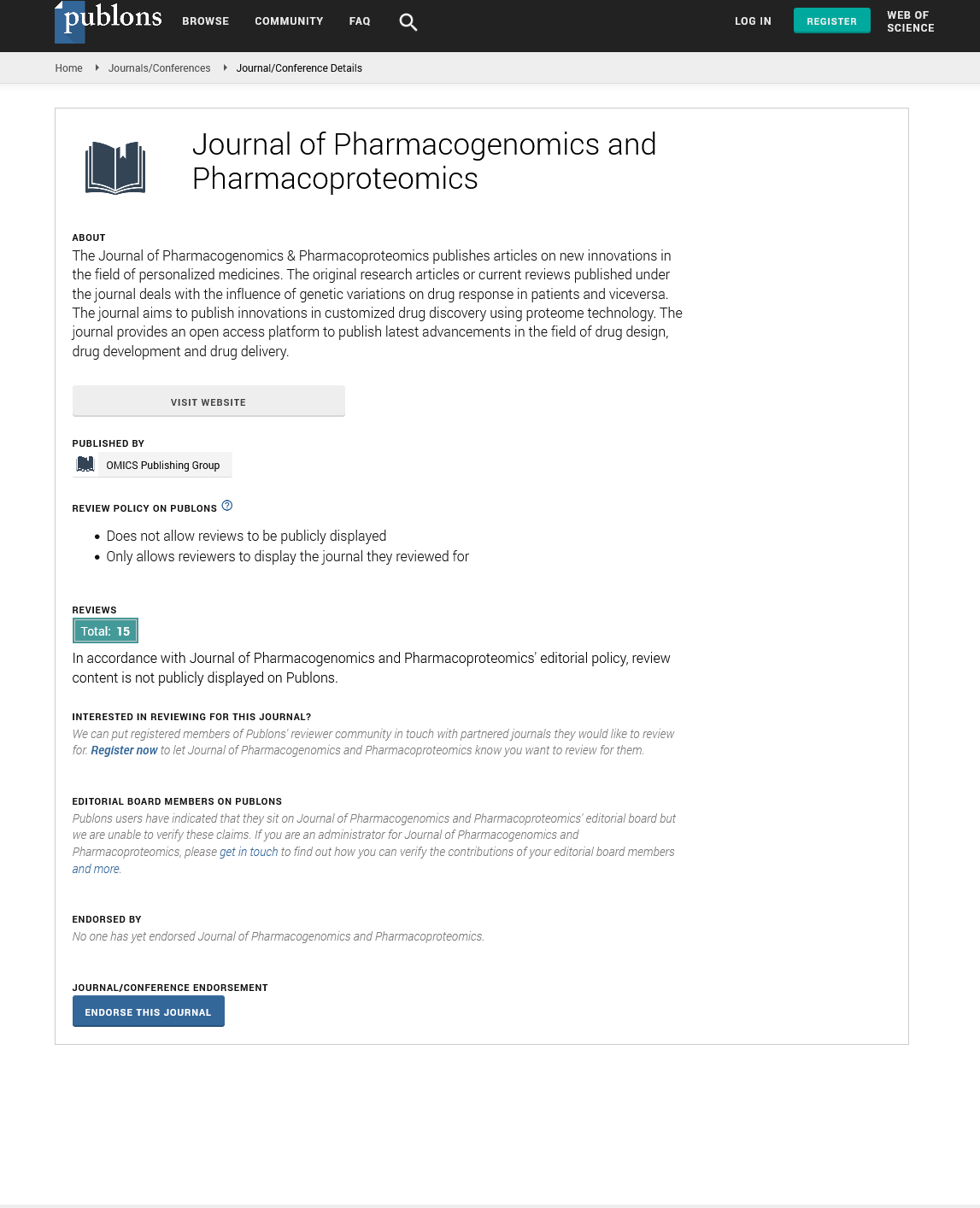Indexed In
- Open J Gate
- Genamics JournalSeek
- Academic Keys
- JournalTOCs
- ResearchBible
- Electronic Journals Library
- RefSeek
- Hamdard University
- EBSCO A-Z
- OCLC- WorldCat
- Proquest Summons
- SWB online catalog
- Virtual Library of Biology (vifabio)
- Publons
- MIAR
- Euro Pub
- Google Scholar
Useful Links
Share This Page
Journal Flyer

Open Access Journals
- Agri and Aquaculture
- Biochemistry
- Bioinformatics & Systems Biology
- Business & Management
- Chemistry
- Clinical Sciences
- Engineering
- Food & Nutrition
- General Science
- Genetics & Molecular Biology
- Immunology & Microbiology
- Medical Sciences
- Neuroscience & Psychology
- Nursing & Health Care
- Pharmaceutical Sciences
Towards personalized therapy of IBD: Identification of specific serum and lipid profile for responders versus non-responders to anti-TNF treatment by MALDI mass spectrometry
3rd International Conference on Predictive, Preventive and Personalized Medicine & Molecular Diagnostics
September 01-03, 2015 Valencia, Spain
Cecilia Gelfi , Moriggi M, Pastorelli L, Fania C and Vecchi M
University of Milan, Italy
IRCCS Policlinico San Donato, Italy
CNR-Institute of Bioimaging and Molecular Physiology, Italy
ScientificTracks Abstracts-Workshop: J Pharmacogenomics Pharmacoproteomics
Abstract:
Inflammatory bowel diseases (IBD) are chronic and relapsing inflammatory conditions of the gastrointestinal tract and comprise Crohn��?s disease (CD) and ulcerative colitis (UC). Both CD and UC are characterized by a great extent of heterogeneity, in terms of phenotypic presentation and response to different therapies; in fact, whereas some patients present limited bowel involvement and a very mild course of disease, others develop very extensive, aggressive disease, displaying extra intestinal manifestations as well. On the same line, the efficacy of different therapeutic strategies is extremely variable from patient to patient. As such, a subset of IBD may require the use of biological drugs targeting TNF, which is a key mediator in IBD inflammatory response; however, up to 10- 20% of patients do not respond to anti-TNF agents. Thus, studies to define subgroups of patients with UC and CD who may benefit from TNF-blockade are needed. To this purpose, a study based on serum and lipid profiling of patients affected by UC and CD has been performed utilizing MALDI mass spectrometry profiling to identify specific markers of therapeutic response. The study was conducted on UC and CD patients of both genders andpatients were followed up to the fourth infusionin order to evaluate response to anti-TNF antibody treatment. Results indicated a difference in serum profiling between men and women after treatment. The analysis of UC responders and non-responders to anti-TNF treatment revealed the presence of 43 peaks, so called best separators between cohorts. Concerning CD, MALDI profiles indicated significant statistical difference in 48 peaks. Comparing UC and CD, the presence of peaks (29 for men, 15 for women) characteristics of the disease was determined. The identification of peaks is in progress and will determine target molecules contributing to clarify the physio pathological mechanisms associated to anti-TNF response. Nevertheless, the serological profile provided by this study will contribute to select the right candidates to anti-TNF treatment.
Biography :
Cecilia Gelfi is a Associate Professor of Clinical Biochemistry and Molecular Biology at the Faculty of Medicine, University of Milan. The scientific activity of Cecilia Gelfi has been focused on: the development of methodologies for the separation and identification of biomolecules. She contributed to the development of electrophoretic techniques transforming them into a physico-chemical tool for probing the structure and conformation of macromolecules; the investigation of the functional and morphological changes occurring in muscle in a number of physiological and pathological states. Recently, the interest have been focused on development of 1) clinical methods for monitoring drugs; 2) protocols for serological profiles for the clinical diagnosis of pancreatic and prostate cancer and inflammatry bowel disease; 3) MALDI imaging methodologies for monitoring nano particles; 4) HPTLC-MALDI methodologies for recognition and quantitation of gangliosides and globosides in tissue extracts. Cecilia Gelfi published 213 scientific articles on international peer-reviewed journals (Scopus h-index 2015: 37).
Email: cecilia.gelfi@unimi.it

